In a world where workplace engagement and employee satisfaction are more crucial than ever, organizations constantly search for effective strategies to retain talent and boost performance. One of the most impactful tools that has gained popularity in recent years is the tiered reward system.
Unlike one-time incentives or traditional reward programs, tiered reward systems create a path of ongoing achievement, encouraging sustained motivation and loyalty. But what makes these systems so effective, and how can they transform an organization’s productivity and culture?
Overview
A tiered reward system is a structured program that rewards employees based on different levels of achievement or performance. Each level reached by an employee or team unlocks a new set of benefits, perks, or recognition.
This system can vary widely depending on an organization’s goals and culture. For example, a sales team may have a tiered reward program where each level rewards employees with increasingly substantial incentives, such as gift cards, paid time off, or even travel opportunities for the top performers. The aim is to keep individuals and teams striving for higher levels, knowing that each success brings them closer to even more substantial rewards.
Why Tiered Reward Systems Are So Effective
1. Building Intrinsic Motivation
One of the main reasons tiered reward systems work so well is because they align with basic human psychology. People are naturally motivated by progression and achievement, and a tiered system capitalizes on this by creating clear milestones. Unlike flat reward systems, where everyone receives the same reward regardless of effort, tiered rewards make individuals feel that their hard work is genuinely recognized and valued.
2. Creating a Clear Path of Advancement
In a tiered reward system, each tier represents a new level of achievement. This is particularly beneficial in environments where employees are looking for ways to advance but may not have immediate opportunities for promotion. For example, an employee may start at the first tier by hitting quarterly targets, advance to a second tier with a higher target, and continue upward. Each step provides employees with a clear understanding of what’s required to achieve the next level, making long-term goal-setting more structured and attainable.
3. Encouraging Consistent Performance
Traditional reward systems often focus on short-term results, like meeting a single quarterly target. However, tiered systems encourage employees to think long-term, as reaching higher tiers requires consistent performance over time. This strategy is beneficial to the company because it reduces the “all-or-nothing” mindset. Instead of focusing on just one big sale or project, employees stay motivated to perform well consistently, driving overall productivity and building a stronger culture of accountability.
Designing an Effective Tiered Reward System
To reap the full benefits of a tiered reward system, it’s essential to design it thoughtfully. Here’s how organizations can set up a system that maximizes motivation and aligns with their broader objectives.
1. Define Clear and Achievable Tiers
Start by identifying the different levels of achievement that will form the backbone of the reward structure. For instance, in a sales reward program, the initial tier might focus on meeting a reasonable sales target, while higher tiers might involve more challenging objectives, like increasing sales by a certain percentage or closing a specified number of high-value deals.
2. Choose Meaningful Rewards
The rewards should be meaningful enough to motivate employees but also sustainable for the company. For example, lower tiers could offer rewards like gift cards or company-branded items, while higher tiers could include bonuses, additional vacation days, or even travel incentives. Customizing rewards to reflect employee preferences—such as professional development opportunities for growth-oriented individuals—can make the program more engaging.
For organizations aiming to make their tiered reward programs unforgettable, incorporating unique forms of recognition can elevate the experience even further. One standout option is presenting exceptional achievers with Custom Acrylic Embedment Awards, which not only capture the significance of the accomplishment but can also encapsulate meaningful keepsakes, logos, or documents within a crystal-clear, durable display. These personalized awards serve as lasting reminders of an employee’s dedication and milestone moments.
3. Incorporate Peer Recognition
Recognition from peers can be just as valuable as a monetary reward. Consider integrating peer nominations or public recognition into the tiered reward system. This strategy not only boosts morale but also strengthens teamwork and fosters a culture of appreciation across all levels of the organization.
4. Set Realistic Goals and Progress Metrics
A successful tiered reward system should include measurable progress metrics that employees can track over time. Communicating what each tier entails and the expectations for achieving it makes the journey transparent and builds trust. For example, if an employee is aware of needing to maintain a certain sales volume for six months to reach a new tier, they’re more likely to stay focused and engaged.
The Long-Term Benefits of Tiered Rewards
Tiered reward systems offer a range of long-term benefits for employees and organizations. They go beyond quick fixes, contributing to sustained engagement and loyalty. Here’s how they make a lasting impact:
1. Reduced Turnover
A tiered reward system can reduce turnover rates by fostering a positive environment where employees feel that their hard work pays off. Employees who feel recognized and see a clear path for advancement are more likely to stay with a company long-term.
2. Enhanced Team Morale and Cohesion
Tiered systems also create a collective goal that teams can work toward. Teams may celebrate when individual members reach certain tiers, creating an atmosphere of shared success and mutual support.
3. Stronger Company Culture
Ultimately, a tiered reward system can become a core part of a company’s identity, showing a commitment to recognizing and nurturing talent. This creates a culture where continuous improvement and long-term growth are valued, attracting employees who are committed to these values.
Motivating Growth, One Tier at a Time
Tiered reward systems offer a strategic and impactful way to drive employee motivation, engagement, and loyalty. By providing a path of progressive rewards and recognizing consistent effort, companies can foster a culture of growth, collaboration, and high performance.
If your organization is looking to build a sustainable and motivating reward structure, consider implementing a tiered system—it could be the key to unlocking lasting motivation and long-term success for your team.
















